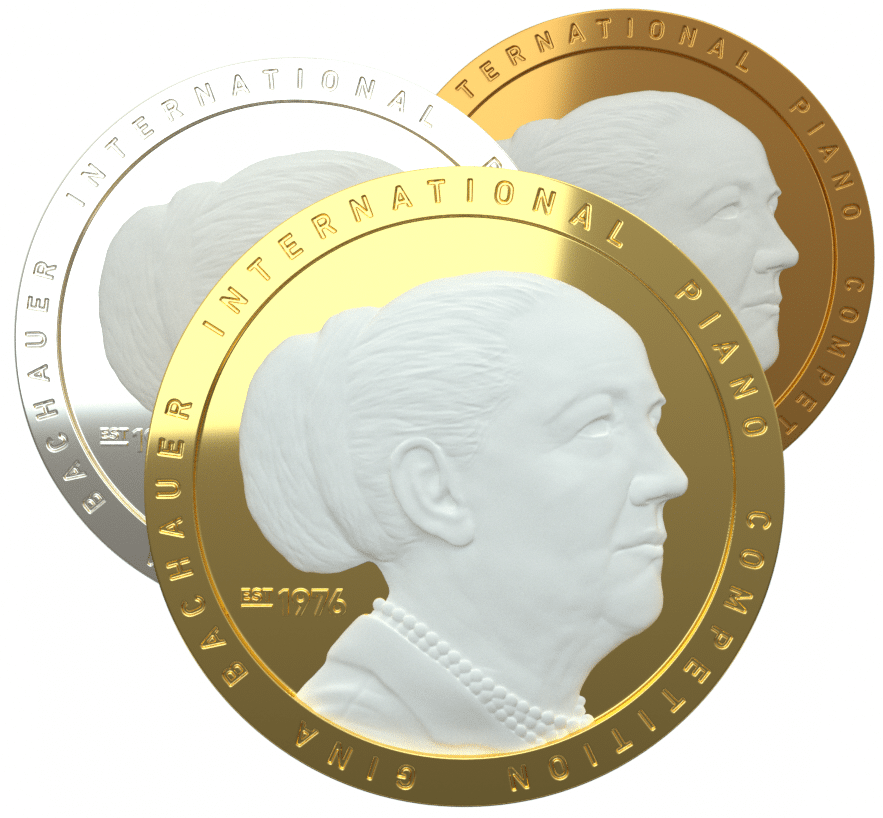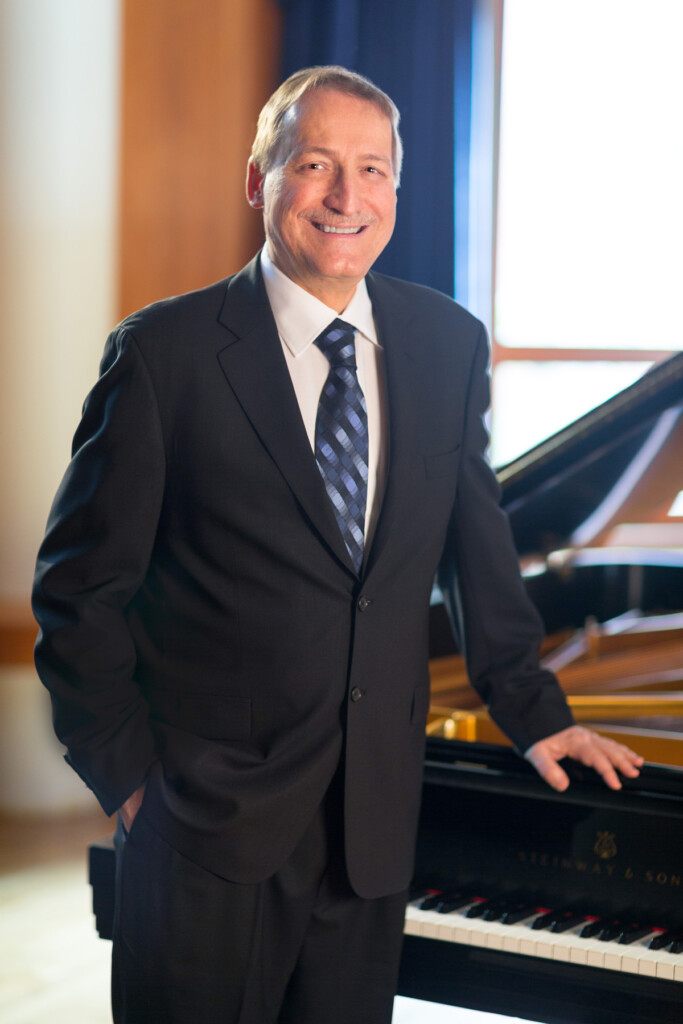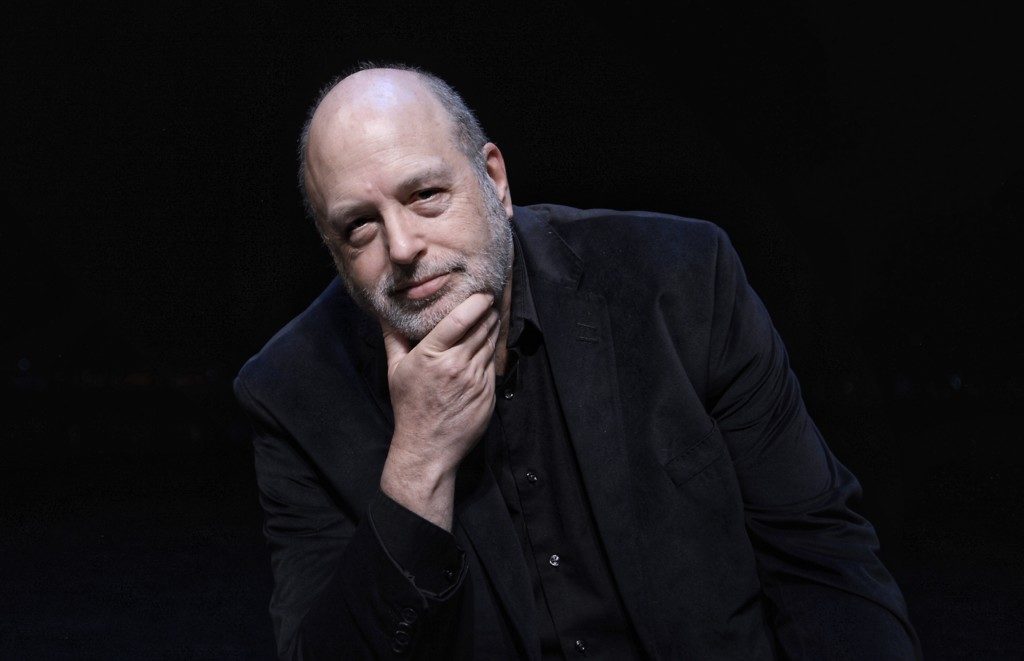A year and a half ago, before the pandemic halted all live performances, jurors for the Gina Bachauer International Junior and Young Artists Piano Competitions had listened to 113 pianists, ranging in age from 11 to 18, perform half-hour programs in one of five cities, including Salt Lake City as well as Hamburg, Moscow, New York City and Shanghai. The preliminary rounds determined the competitors for the solo rounds and finals in Salt Lake City, which were originally slated for June last year.
Since then, many of the world’s elite piano competitions have gone online and perhaps not so ironically, new ones have populated digital media as well. The Bachauer Foundation, which is celebrating its 45th anniversary, postponed last year’s competitions in the hope that they could be conducted live in the Rose Wagner Center for Performing Arts this year. But, even as pandemic conditions have eased significantly, thanks to the widespread distribution of vaccines, the Bachauer competition will be conducted this month through video recordings with 44 young pianists representing 14 countries. An international jury will determine who advances to the final round, where competitors will vie for medals and their share of $60,000 in cash prizes in two categories: Junior, representing the 11-14 age group and Young Artists, representing 15-18.
While a live, in-person competition would have been preferred, the online format, nevertheless, offers some important advantages not only for the artists, but also for a global audience which will be able to stream the video recordings for free at their convenience. Normally, the young pianists travel to Salt Lake City for the final rounds, often with one or more family members, and many stay with host families in the local area. With a remote competition, family, relatives, teachers and friends of the competitors, who live as far as 7,200 miles from Salt Lake City, will be able to follow the performances online at no charge through the 13-day schedule. Furthermore, the Bachauer competition stands out among online competitions for younger artists precisely because the process involved at least the entire preliminary round being conducted with live performances.
As for the young artists, who will perform two solo rounds before elimination, they are free to choose any combination of works and composers for each program, which allows them the individuality and creativity to express the best of their technical, stylistic and interpretive skills. And, the competitors do not shy away from the world’s most commanding piano literature, which is heard at international competitions of artists who are twice or more their age. The pianists have chosen works by Beethoven, Chopin, Liszt, Prokofiev, Rachmaninov and Schumann, among others. There also are contemporary composers, including Elliott Carter.
The levels of technique and musicianship are among the strongest at this age level ever seen in a Bachauer competition for the Junior and Young Artists categories — with both Douglas Humpherys, Bachauer’s artistic director, and Frank Weinstock, internationally acclaimed pianist who lives in Salt Lake City and is among the jurors, using the word “extraordinary” to describe the field this year. Another unique wrinkle to this year’s online competition is that all of the competitors are a year and a half older than when they competed in the preliminary rounds. Kary Billings, Bachauer’s executive director, says that 70 percent of the submitted programs for the solo rounds comprise new music choices by the pianists.
“The recordings are living up to expectations,” Humpherys explains. “Video is nice because you know students are putting their best foot forward and what they are submitting does not have a wrong note or a memory slip that they think would ruin their chances.” He adds that the jurors also have the benefit of comparing the live performances from the preliminary rounds with the submitted videos.
As a comparison, in 1984, Russian pianist Evgeny Kissin recorded both of Chopin’s piano concertos with the Moscow Philharmonic at the age of 12. As Humpherys explains, many young world-class pianists can claim the credit of having performed the Rachmaninov Third Piano Concerto (as an example) at the age of 11 or 12, which is an exceptional accomplishment, but by the time the artist is in their early 20s, it is a no longer a unique achievement because every peer soloist has already performed it. This also explains in part why Humpherys and his colleagues at Bachauer avoid using the term prodigy to characterize these young talented musicians.
“I always tell the story that when I was 19, certain pieces of great profundity were deemed by teachers and conductors as being those that no one should play until they’re at least 40,” Humpherys, who won the gold medal at the first Bachauer competition, explains. “Those days are gone. Everyone is playing everything, and that includes pianists as young as 12, 13, or 14.” Weinstock adds, “I think back to hearing this music for the first time and falling in love with pieces, such as hearing a live performance of Chopin’s first piano concerto. It is a magical time where every day you’re discovering wonderful new music.” That passion is evident in the performances of a new generation of pianists who will grace the world’s most celebrated stages for recitals and concertos with orchestras around the world.
Bachauer competitors this year also do not have to worry about the risk of being eliminated for a slip-up or wrong note at a one-time live performance, where they don’t have the advantage of a do-over. Competitors were given the freedom to submit their most polished video performance as they see fit. This likely will heighten the competitive fervor because nearly all of the young musicians have gained a lot of experience in posting performances on YouTube, TikTok, Facebook, Instagram, since the age of six or even younger.
The competitors also have submitted short videos updating their personal lives that round out the perspective of seeing how these young musicians have grown during the pandemic. Originally, 51 pianists were selected for the solo rounds but seven dropped out for various reasons. Humpherys says two reasons explain why this can happen. “With an 18-year-old turning 19, very likely there will be a change in teacher when they go to college. A sophomore wrote to me that he wanted to play Ravel’s Gaspard de la nuit but instead his teacher wanted to talk about Haydn and early Beethoven piano works to develop new ways of playing.” He adds, “One person’s teacher didn’t want him to do the Bachauer, because a major competition was not what the teacher had in mind.” Billings notes that one competitor dropped out because he wanted to focus more on his pre-medicine studies in Boston. While many musicians took advantage of extra free time during the pandemic to practice more, others, especially as vaccines became more prevalent, have been eager to enjoy the joy and freedom of social interactions as pandemic restrictions have lifted.
Billings adds that the pianists also were given the liberty to record their performances wherever it was most accessible and convenient for them. Some of the performances, therefore, were recorded using Steinway concert grand pianos in acoustically engineered venues or halls while some recorded it in their living rooms on a six foot grand piano. Jurors have been advised to avoid comparing performances on the basis of the audio quality in the video. Jurors also will be able to view the videos as frequently as they like prior to voting — an opportunity applicable to general viewers as well. “As an adjudicator, I know that once you get past the first 15 or 20 seconds in a video where the piano is not very good, you realize that it is more important to focus on the playing and what they’re doing,” Weinstock explains.
Bachauer organizers are optimistic about this year’s online format. “One of the silver linings is that anyone will be able to see them, wherever they are in the world,” Weinstock says, adding that the videos will be archived forever. Humpherys says the format will put proper pressure on the jury to hear all of the performances with the opportunity of listening more than once to the recording to make sure they have heard every note. Billings says they also will be able to gather “evidence from a hard long year to see how these kids have grown, by remembering just what a difference a year can make, especially this past year.”
Lastly, there is the resilience of the music the young pianists have chosen for the competition. “It was supposed to be the 250th anniversary of Beethoven’s birth in 2020 but hundreds of all-Beethoven concerts for Carnegie Hall were canceled,” Humpherys says. “And, it caused me to think about what is it about this music that captures our lives and transcends such difficult circumstances. Many composers worked through plagues, revolutions, genocides and the Holocaust. Russian composers labored under threats by Stalin and Hitler, including Prokofiev and Shostakovich. It is encouraging at least from the standpoint to see how the hurdle to musical life and the discipline needed to do so has been cleared during the pandemic. The art has endured many far worse hurdles in history. Their music will outlive all of us.”
The competition will start June 13, with 23 pianists in the junior competition and culminate on June 19 with the finals and announcement of the medalists. The Young Artist competition will start June 20 with 21 competitors and conclude on June 26. In both instances, the final rounds will consist of additional video performances, presented to the jury and public only after the announcement of the five finalists each week. Humpherys is chair of the jury, which includes Weinstock, Rae de Lisle (New Zealand), Miyoko Lotto (Japan/U.S.), Faina Lushtak (Russia/U.S.), Eleanor Wong (Hong Kong) and Bernd Zack (Germany).
The gold, silver and bronze Bachauer medals have been redesigned to include a cameo portrait of pianist Gina Bachauer, for whom the Foundation is named. O. C. Tanner redesigned the medals as a donation to the organization.
Bachauer will release 10 video recordings per day. All videos will be streamed at the Bachauer website as well on the Foundation’s YouTube channel. As the videos comprise the official competition, the comments function will be disabled. The Bachauer website also has the complete schedule and competitor profiles available.
The list of competitors, their age at the time of the preliminary round, and their nation, follows for both competitions:
JUNIOR
Pyotr Akulov, 13, Russia
Steven Cui, 14, China
Alyssa Gabrilovich, 14, US
Andrew Gu, 13, US
Seokyoung Hong, 12, South Korea
Hanxi Huang, 13, China
Jungmin Kim, 12, South Korea/USA
Yeoeun Kim, 14, South Korea
Zhexiang Li, 14, China
Matthew Liu, 13, US
Sophia Liu, 11, China
Joe O’Grady, 14, Ireland
Chanhyung Park, 13, South Korea
Hudson Ragins, 13, US
Christopher Shin, 14, US
Bohdan Terletskyy, 14, Ukraine
Ryan Wang, 14, US
Kai-Lang Yang, 12, Taiwan
Lindsey Yang, 14, US
Vsevolod Zavidov, 14, Russia
Eric Zhang, 14, US
Nathaniel Zhang, 13, US
Harmony Zhu, 14, Canada
YOUNG ARTISTS
J J Jun Li Bui, 16, Canada
Yihang Chen, 18, Taiwan
Maria Eydman, 15, Germany
Solomon Ge, 17, US
Gavin George, 17, US
Eric Guo, 17, Canada
Curtis Phill Hsu, 15, US
Yun Keon Ji, 17, South Korea
Masaharu Kambara, 17,Japan
Ryunosuke Kishimoto, 17, Japan
Leonid Nediak, 17, Canada
Hao Rao, 16, China
Kasey Shao, 16, US
Haolun Sun, 15, China
Barbare Tataradze, 17, Georgia
Chun Lam U, 17, Hong Kong
Daniil Umnov, 18, Russia
Haozhou Wang, 18, China
Lin Kai Zhang, 15, Canada
Lixin Zhang, 18, New Zealand
Ryan Zhu, 16, Canada



